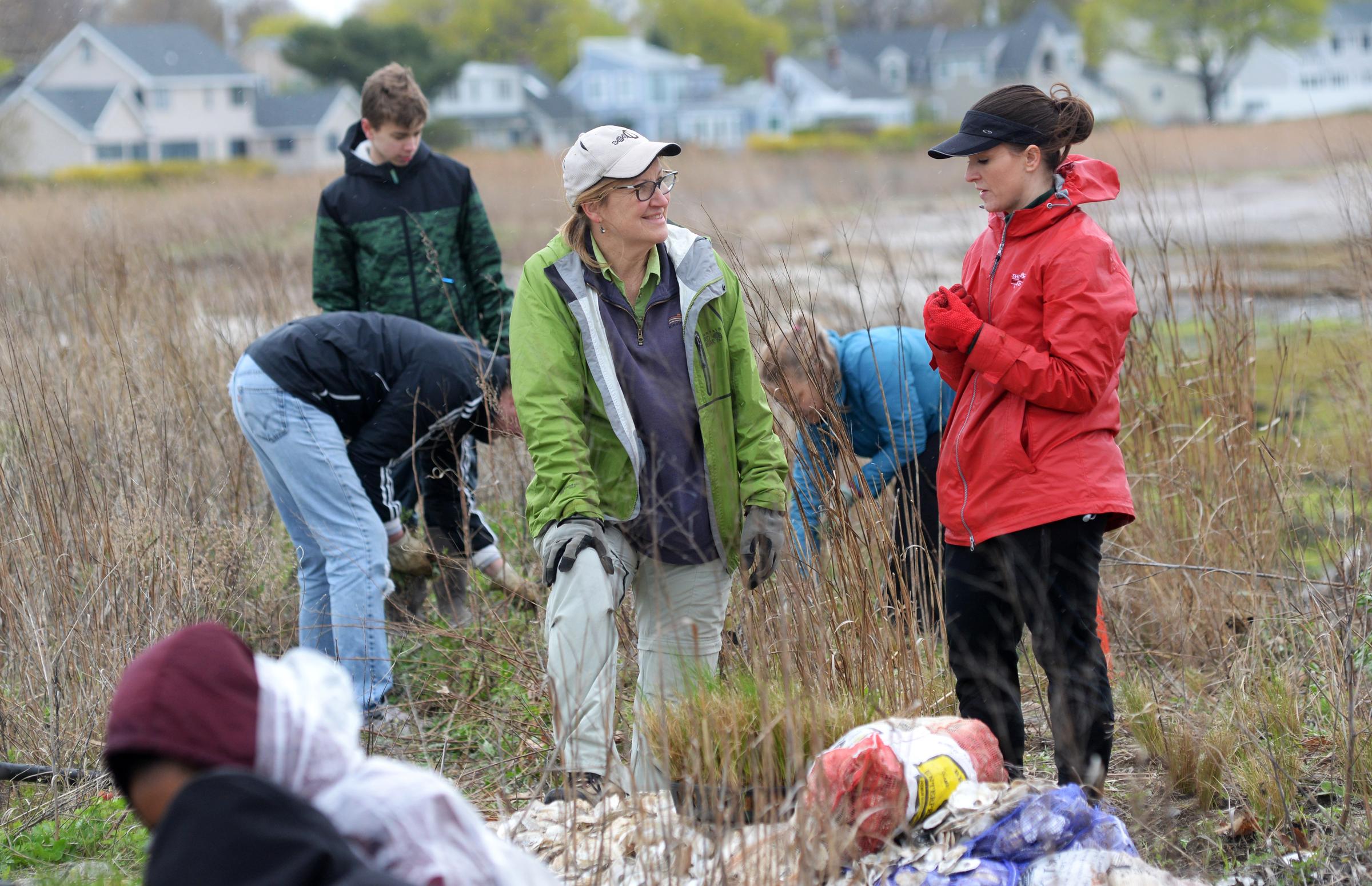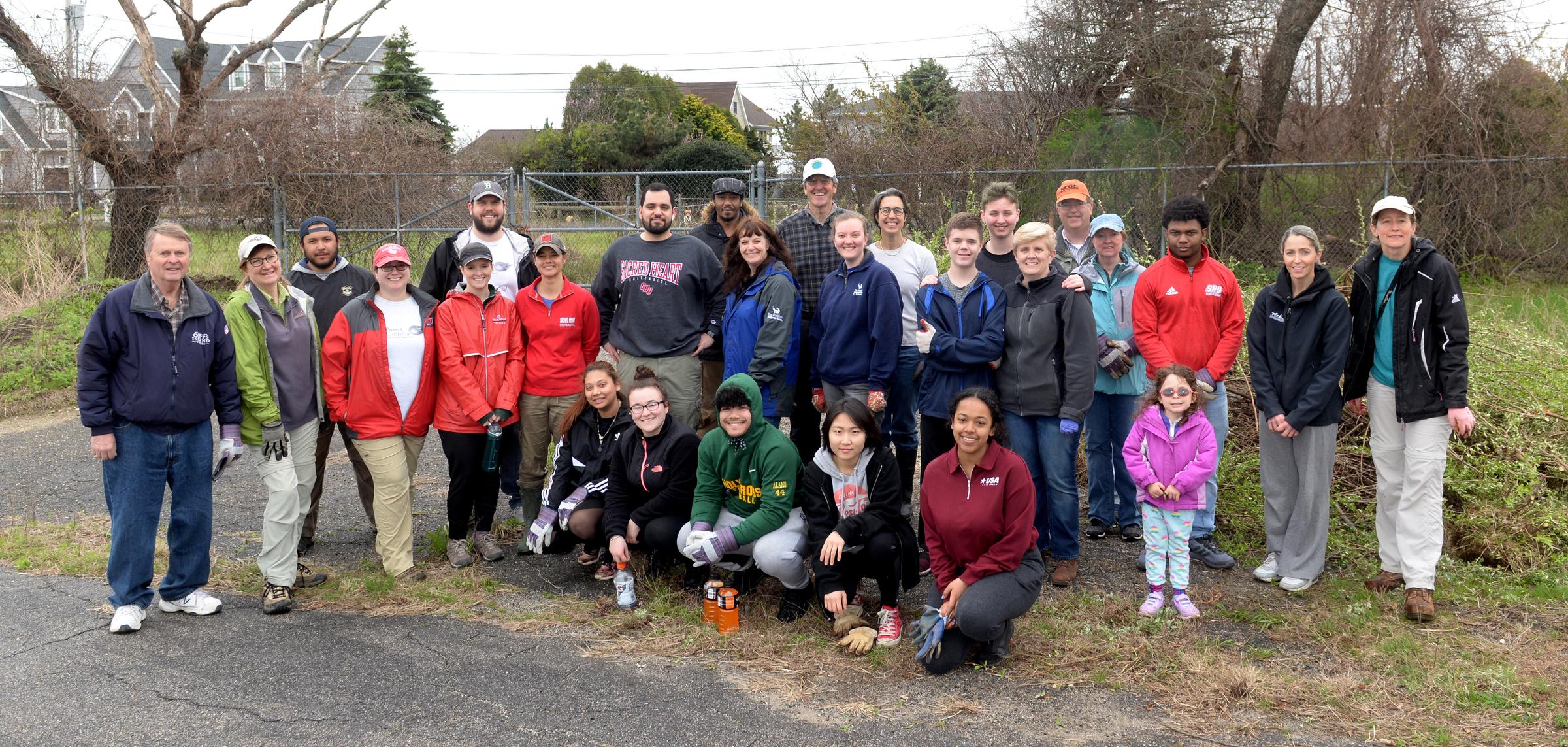(STRATFORD, CT. January 2020) -- “The numbers of birds is falling in coastal New England. We’re suffering quite a bit from climate change effects: more intense storms are eroding our coastlines, and the marshes are having a hard time keeping up with sea level rise,” said Professor Jennifer H. Mattei of Sacred Heart University.
“The goal of our living shoreline project – and collaboration with Audubon Connecticut - is to restore coastal habitat and preserve what we have, in an effort to help wildlife and coastal communities.”
This past Earth Day, Sacred Heart University students joined local high school students and other community members to add over 1,500 native plants to various habitats at the award-winning Stratford Point living shoreline, part of an Audubon Connecticut Important Bird Area.
900 Black grass (Juncus gerardii) plugs, five Black gum (Nyssa sylvatica) trees, 350 Blue-stemmed Goldenrod (Solidago caesia) flowers and more were added to the coastal forest, open grasslands, and pollinator meadows. The plantings covered approximately 1.5 acres.
After Hurricane Sandy, many federal and state agencies began offering grant funding for projects that addressed wetland preservation and restoration in the face of a changing climate.
Through the Connecticut In-Leiu Fee Program for wetland mitigation, Audubon Connecticut began offering funding for projects that protected or restored wetland habitat through nature-based solutions. Professor Mattei applied, and the “living shoreline” project came to life.
In 2014, a pilot project was installed at the site using 64 cement reef balls, each weighing 1,500 pounds, to absorb wave energy and reduce erosion. As a result of these structures, in just two years, sand deposits rose 12 inches both behind and in some areas in front of the reef. In one year, the planted saltmarsh grasses doubled in size.
“Another 300 reef balls were added in 2017 and nearly 30,000 saltmarsh grass plugs have been planted,” says Corrie Folsom-O’Keefe, Audubon Connecticut’s Director of Bird Conservation. “It has been really incredible to see a saltmarsh re-establish on the site in just four years!”
What’s next for the living shoreline?
“We’re working with Audubon Connecticut to think about how the site could become a center for coastal research at the university level,” explained Mattei. “It’s already the first living shoreline project in the state, but it could expand to become the first coastal research center for bird, wildlife and habitat conservation too.”
Already, the coastline has changed for the better.
Birds like the Great Egret (in summer), American Wigeon (in winter), and Saltmarsh Sparrow (during migration) have returned to feed in the area. Homes behind the marsh are better protected from storm surges and flooding.
”We hope that the project can serve as an example to coastal communities on how Living Shorelines can be used to increase the resiliency of shorelines and at the same time improve habitat for wildlife.”
Organizations participating in the Party for the Planet Earth Day Event at Stratford Point include:
Sacred Heart University
Audubon Connecticut
The Maritime Aquarium
The Nature Conservancy
North American Marine Environmental Protection Association
University of Bridgeport
Corteva Agriscience™ Agriculture Division of DuPont ™
Star 99 radio station
Beardsley Zoo









